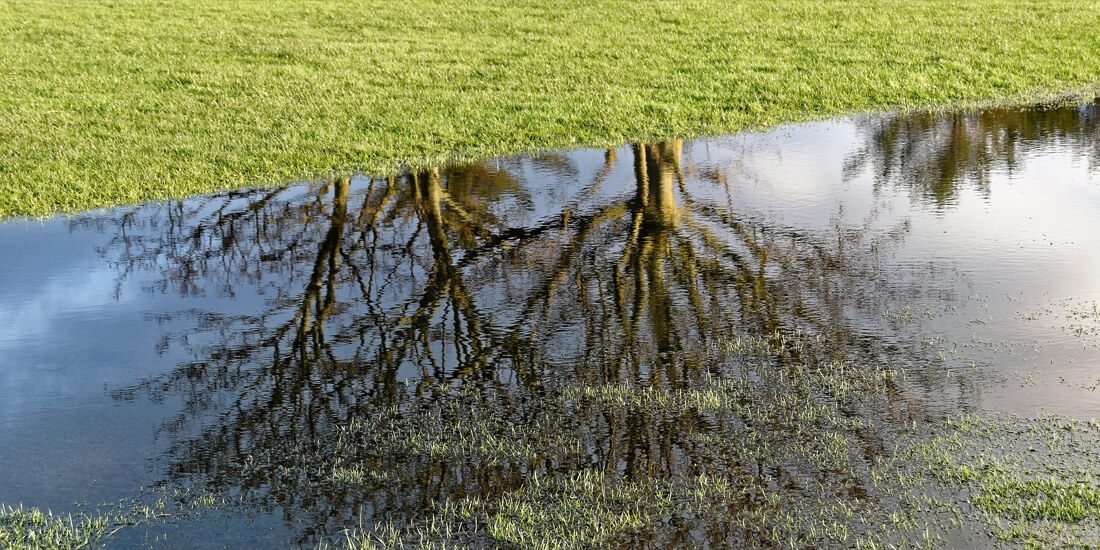How to flood proof your lawn

Fortunately, we’ve got some helpful tips to help you avoid major flooding disasters that will also help flood proof your lawn!
Tips to flood proof your lawn:
1. Level up
We’ve all heard the old saying, ‘failing to prepare is preparing to fail’, and when it comes to flood proofing your lawn, it’s not a warning to be ignored. Gardens can often have uneven areas, such as holes and pits, which make great spots for rainwater to gather. Keeping the area level is a good way to prevent having to deal with waterlogged areas once the spring rolls around. If you notice unlevel ground, wait until the lawn is dry during the summer months, apply a mixture of sand and topsoil, and then lightly compact the affected areas. This should drown out any chance of unwanted puddles appearing after heavy rainfall and help water disperse without too much hassle.
2. Aerate
Lawns frequently suffer from compaction when dealing with lots of traffic, particularly through the summer months, and it’s important to allow your garden to recover before the wet, winter months arrive. Aeration is a great way to do this, spiking, slitting or coring the soil can open up pores allowing water and oxygen to travel through and reducing the chance of the soil becoming saturated. Early September is the best time to aerate, just in time for the winter and once it’s been completed, you (and your lawn) can breathe a little easier.
3. Good lawn health helps to flood proof
Having a healthy lawn can make all the difference when it comes to drought and flooding. Applying fertiliser in spring can help the grass to develop deep root systems, whilst applying fertiliser in autumn strengthens the grass, making it easier to withstand harsh winter conditions. Fertilisers will also help soil health and drainage and should be a top priority when maintaining a lawn. Occasionally some areas of the garden can lose grass coverage for a variety of reasons. It is important to re-seed these areas before the winter as bare soil can be easily compacted by heavy rainfall, and this can lead to more problems.
What to do if it's too late and your lawn's already flooded?
Should your lawn become waterlogged, all is not lost, and there are steps you can take to get your garden back to its best. First, let most of the water evaporate before venturing onto the grass, as there is a risk of churning up the ground and doing more damage.Once the surface water has mostly dispersed, use a fork to puncture the soil and create large holes for drainage, then use a hollow tine aerator to remove any clumps of waterlogged soil that remain. It also wouldn’t hurt to throw down some additional topsoil or sand, this will absorb any remaining moisture and level out any damaged areas. If some of the grass has died off, simply overseed in the spring, and your lawn should be back to looking swell in time for summer.